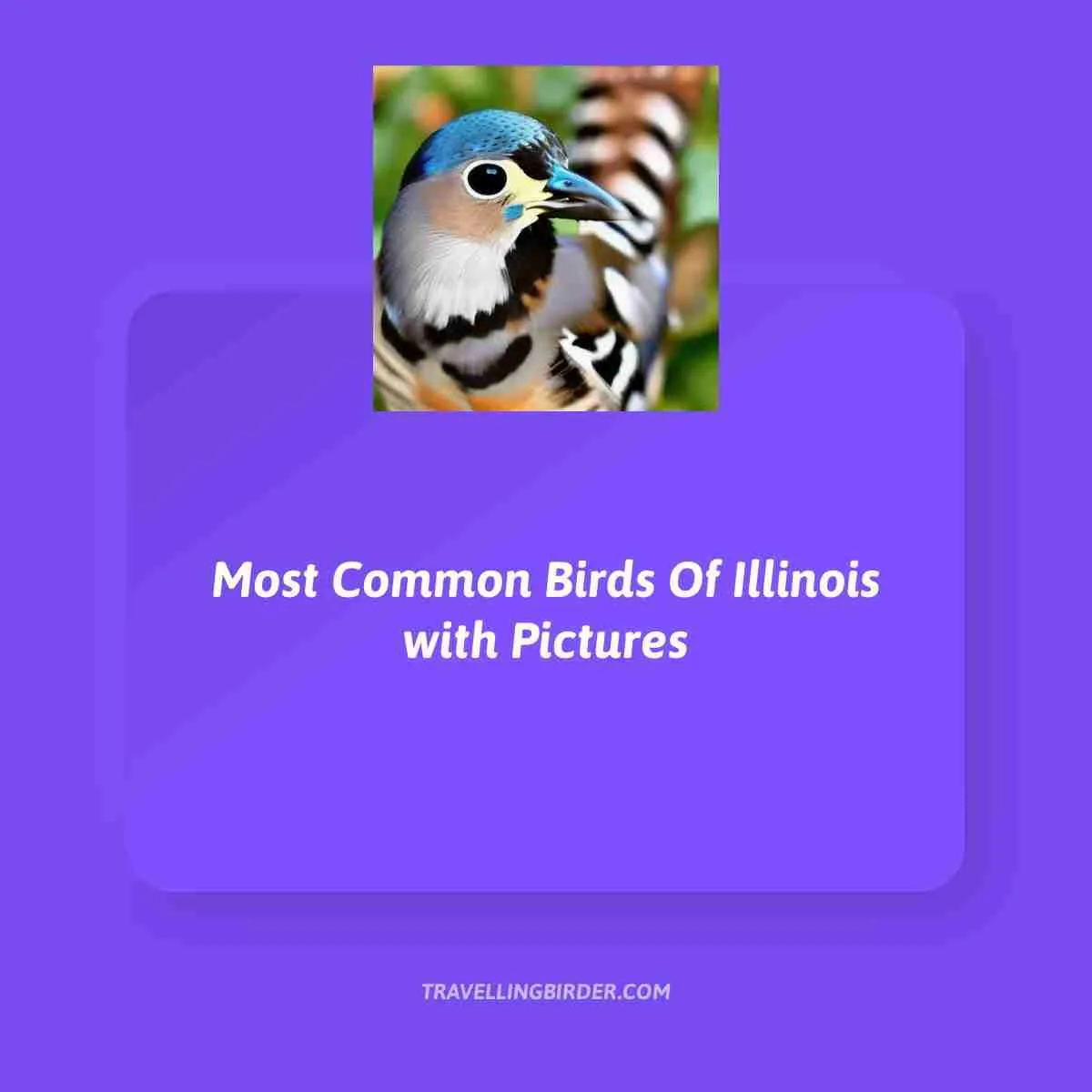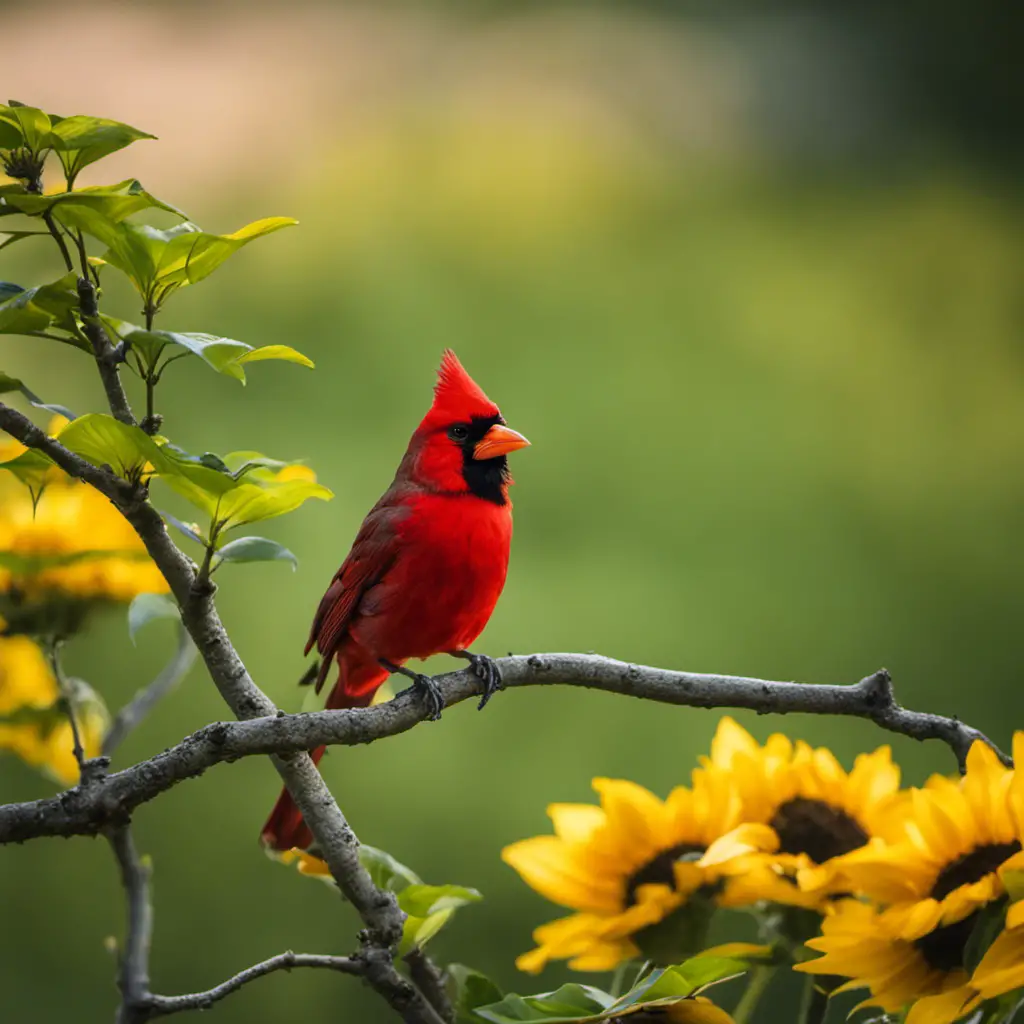New Mexico is home to a diverse array of bird species, including the American goldfinch, American kestrel, and northern mockingbird. However, some of the most commonly seen birds in the state are the black-chinned hummingbird, pinon jay, and pinyon finch.
We’ll go over the most popular birds in New Mexico, as well as their images and important stats. Only reputable sources were used for this information, which was verified by an Ornithologist.
Common Backyard Birds in New Mexico:
White-crowned Sparrow
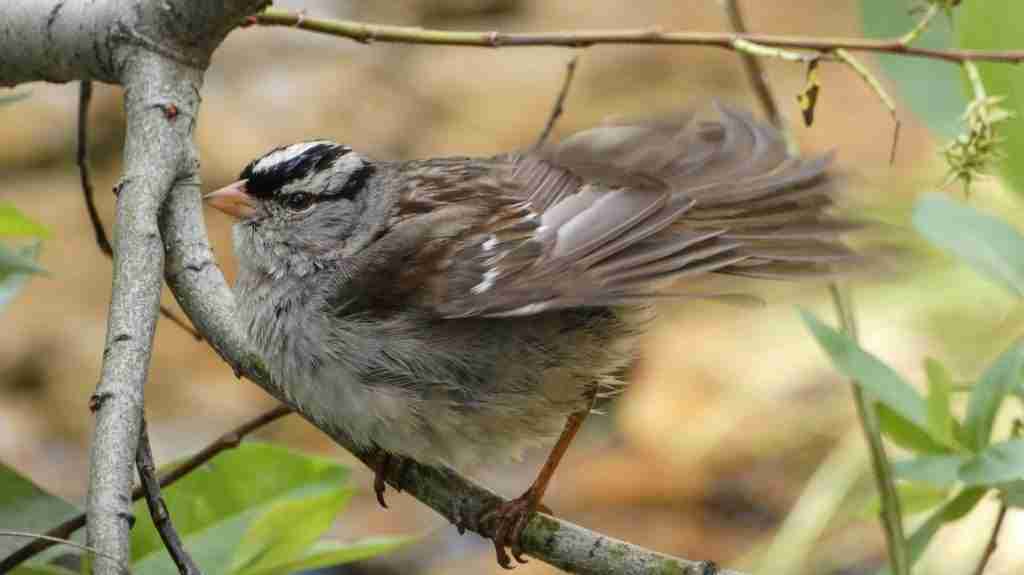
White-crowned Sparrows, found in New Mexico, can be identified by their black and white striped head and yellow eye ring. These birds mainly eat black oil sunflower seeds and insects. They typically measure about 6 inches in length.
White-crowned Sparrows can be found in open woodlands and fields. In the winter, they often gather in flocks to forage for food. These sparrows are also known for their beautiful songs, which they use to defend their territory and attract mates.

Mourning Dove
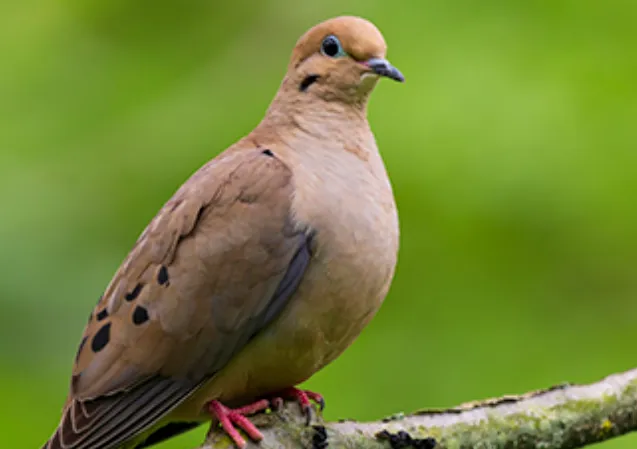
Mourning dove, also known as the “rain dove” or “turtle dove”, can be identified by its long pointed tail and small, round body. They have a soft, gray-brown plumage with black spotting on their wings.
Their diet consists mainly of seeds and grains, but they will also eat insects and fruit.
Mourning doves typically range in size from 10-12 inches in length, with a wingspan of 14-18 inches.
These birds can be found in a variety of habitats, including open fields, farms, and suburban areas.
Mourning doves are known for their distinctive cooing call and for performing “mating dives” during courtship. They typically mate for life and build flimsy stick nests in trees or on structures like window ledges. The female mourning dove will lay two white eggs, which both parents take turns incubating for about 14 days before they hatch.
Mourning doves are also known for their swift, graceful flight and can reach speeds of up to 55 miles per hour. They have been known to migrate in large flocks during the winter months.
In New Mexico, mourning doves can be found year-round and are a popular game bird for hunters. Their populations have remained stable, with an estimated population of more than 400 million individuals in North America.

White-winged Dove
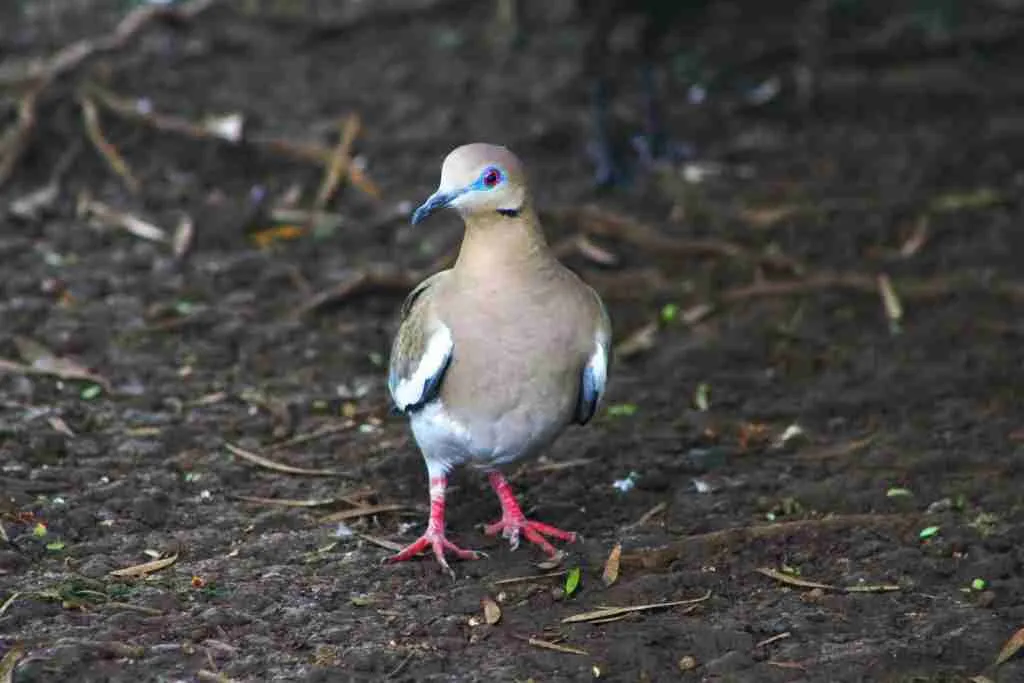
White-winged Dove is a medium-sized dove with gray-brown upperparts, white wing patches, and dark spots on its wings. Its underparts are pale gray with a darker gray breast band. Its bill is black and its legs and feet are reddish-pink.
In New Mexico, this bird can be found in open scrub and desert habitats, as well as urban areas. Its diet consists mainly of seeds and grains, but it will also eat insects and fruit.
White-winged Dove is known for its loud, repetitive cooing call. These birds typically form small flocks, often mixed with other dove species. They nest in trees or on buildings, using twigs and grass to construct their nests.
In the spring and summer months, White-winged Dove may engage in courtship displays, including cooing, bowing, and presenting of sticks or nesting material to potential mates. They typically lay two white eggs, with both parents taking part in incubation and caring for the young.
In New Mexico, White-winged Dove is a year-round resident and can also be found as a winter visitor in some parts of the state.
They are commonly hunted for sport and are also sometimes considered pests due to their tendency to visit bird feeders in large numbers. Despite this, their populations have remained stable and they are not currently threatened.

American Robin
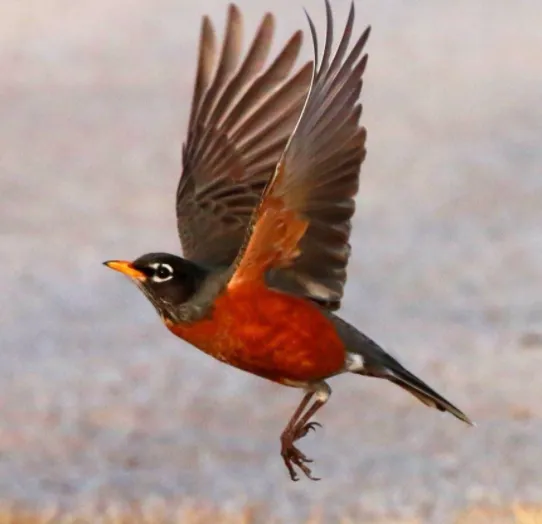
(Turdus migratorius) can be identified by their dark gray-brown back, reddish breast, and white belly. They are omnivorous, feeding on fruits, insects, worms, and even small amphibians or reptiles. Adult robins typically reach about 10 inches in length and have a wingspan of roughly 16 inches.
These birds can be found in a variety of habitats, including woodlands, parks, and even urban areas. In the winter, robins may gather in large flocks and can often be spotted on lawns searching for food. They are also known for their singing abilities and will frequently perch on high branches to proclaim their territory with loud, melodic songs.

Dark-eyed Junco
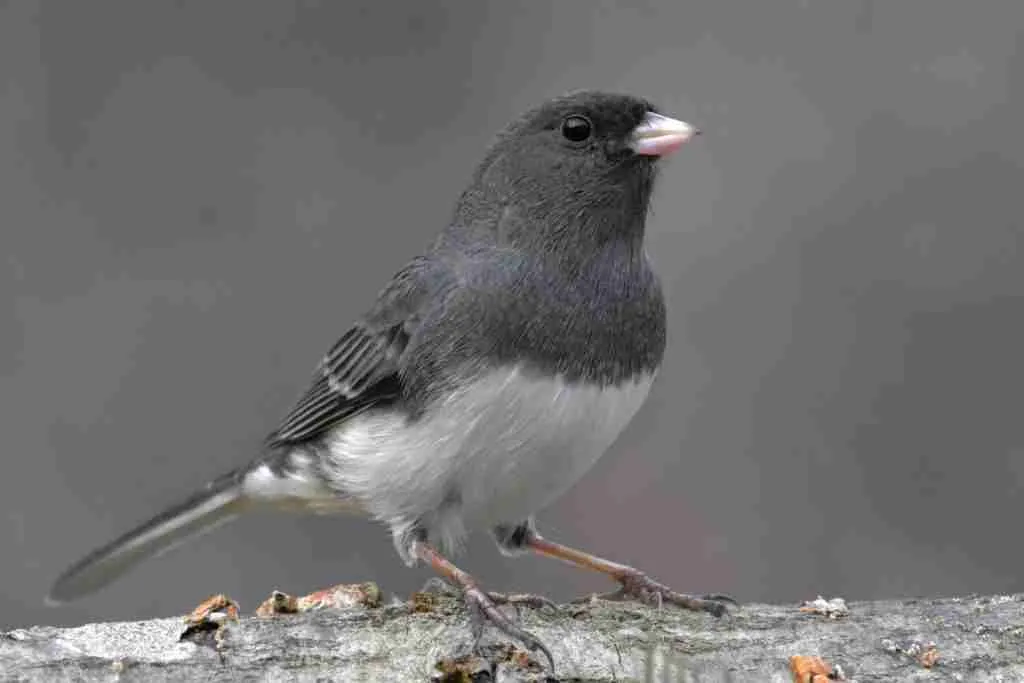
Dark-eyed Junco, also known as “snowbirds”, are a common sight in New Mexico during the winter months. They have distinct gray heads and breasts, white bellies, and dark wings with white stripes. Their diet mainly consists of seeds and insects.
These small birds typically measure around 6 inches in length. They can be found in coniferous and mixed forests, as well as open areas such as meadows and lawns.
In their behavior, Dark-eyed Juncos tend to forage on the ground in flocks. They have a distinct musical trill and also make a sudden “wing flick” display during courtship. These birds nest in tree cavities or on the ground, typically laying 4-6 brown speckled eggs.

Spotted Towhee

(Pipilo maculatus) is a member of the sparrow family, with a black head, back, and tail, white belly and chest, and distinctive spots on its wings and flanks.
They can often be found in open woodlands and thick brush, foraging for insects, seeds, fruits, and berries on the ground. They are known for their loud, repetitive song and habit of scratching the ground with both feet to uncover food.
They average about 9 inches in length and can reach weights of up to 1.5 ounces. In New Mexico, Spotted Towhees can be found year-round in suitable habitats such as woodlands, parks, and foothills.

Lesser Goldfinch
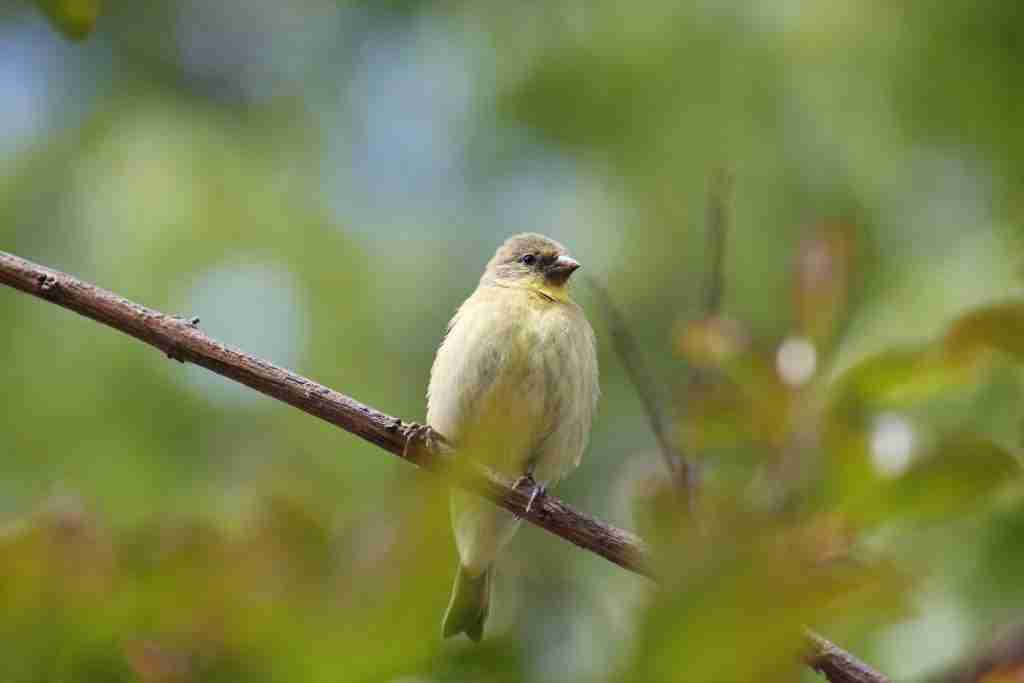
Lesser Goldfinch, also known as Spinus psaltria, can be identified by their small size (5-5.5 inches), bright yellow body, black wings with white wing bars, and a small black bill. They are often seen in flocks foraging on thistle and other small seeds from plants or feeders.
In New Mexico, they can be found in open woodlands, brushy areas, and suburban yards. They have a habit of hanging upside down to feed on seed heads, and will often come to backyard bird feeders filled with thistle or nyjer seed.
During breeding season, male Lesser Goldfinches may engage in aerial displays, diving and chirping as they impress potential mates. They nest in shrubs or small trees, building cup-shaped nests made of plant fibers and animal hair. Both male and female participate in incubating the eggs and raising the young.

Northern Flicker

Northern Flicker woodpeckers have a distinct black and white barred pattern on their wings, a brown spotted breast, and a red patch on the back of their heads. They primarily eat insects, fruits, and nuts. These birds typically grow to be around 12 inches in length and can be found in open woodlands or urban areas throughout New Mexico.
Northern Flickers are known for their excavating behavior and can often be seen pounding on tree trunks or power poles to search for food. They also like to catch insects in flight, or glean them from tree branches. Flickers are commonly seen on the ground, where they feed on ants and other ground-dwelling insects.
Generally quite shy, Northern Flickers form monogamous pairs and nest in cavities, often using abandoned woodpecker holes. They may also use nest boxes provided by humans. During the winter, these birds can sometimes be found in flocks with other woodpeckers or blackbirds.

Western Bluebird – Sialia mexicana

The Western Bluebird can be identified by its bright blue upperparts, rusty-red breast, and white belly. This bird primarily feeds on insects and berries.
In terms of size, the Western Bluebird measures around 6 to 7 inches in length with a wingspan of 9 to 11 inches.
These birds typically inhabit open woodlands, grasslands, and agricultural areas. They also frequently build their nests in tree cavities or man-made nesting boxes.
In terms of behavior, Western Bluebirds are often seen perching on low branches or flying out to catch insects in midair. During breeding season, male bluebirds can often be observed performing aerial displays to attract a mate.
The Western Bluebird is a common and widespread bird in New Mexico. However, their populations have declined due to competition with invasive species such as the House Sparrow and destruction of nesting sites. Conservation efforts such as nest box programs have helped to increase their numbers in recent years.

Red-breasted Nuthatch – Sitta canadensis

The Red-breasted Nuthatch can be identified by its gray back and white underparts, black crown and nape, and bold red chest. This small bird ranges from 4.5 to 5 inches in length with a wingspan of 7.5 to 9 inches.
In the wild, this bird feeds on seeds, nuts, and insects. It can often be found foraging on tree trunks and branches, using its sharp bill to pry open crevices in search of food.
The Red-breasted Nuthatch prefers coniferous forests as its habitat, particularly in the higher elevations of western North America. This bird is also known for its ability to hang upside down and move acrobatically along tree branches.
During the breeding season, this bird forms monogamous pairs and builds a nest in a cavity or natural hole in a tree. The male and female work together to gather materials for the nest and care for the young. Outside of breeding, Red-breasted Nuthatches often move and forage in small flocks.

Northern Pygmy Owl – Glaucidium californicum
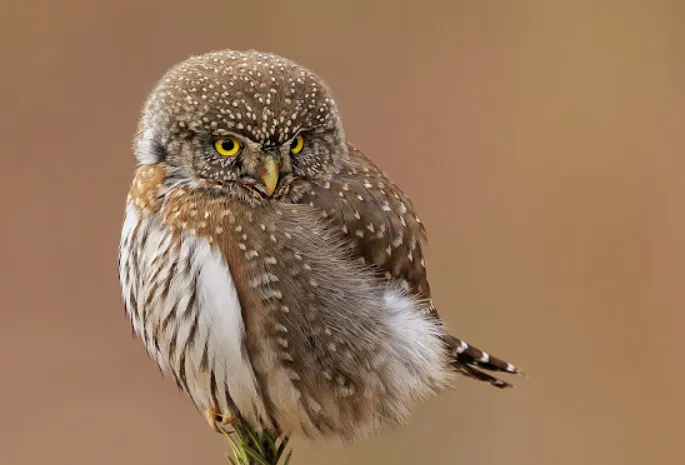
The Northern Pygmy Owl is a small owl, measuring around 7 inches in length. It has a round head with yellow eyes and dark brown or black facial markings. Its back is brown with white spotting, and its belly is white with fine brown barring.
In terms of diet, this owl primarily feeds on small rodents and birds. It hunts by perching and watching for prey, and then swooping down to catch its prey with its talons.
This owl can be found in coniferous forests in the western United States, including New Mexico. They typically nest in tree cavities or old woodpecker holes.
The Northern Pygmy Owl is mostly active during the daytime, and can often be seen perching on tree branches or flying low in search of prey. It is known for its bold behavior, and will sometimes confront larger birds such as hawks or crows.

Golden-crowned Kinglet – Regulus satrapa
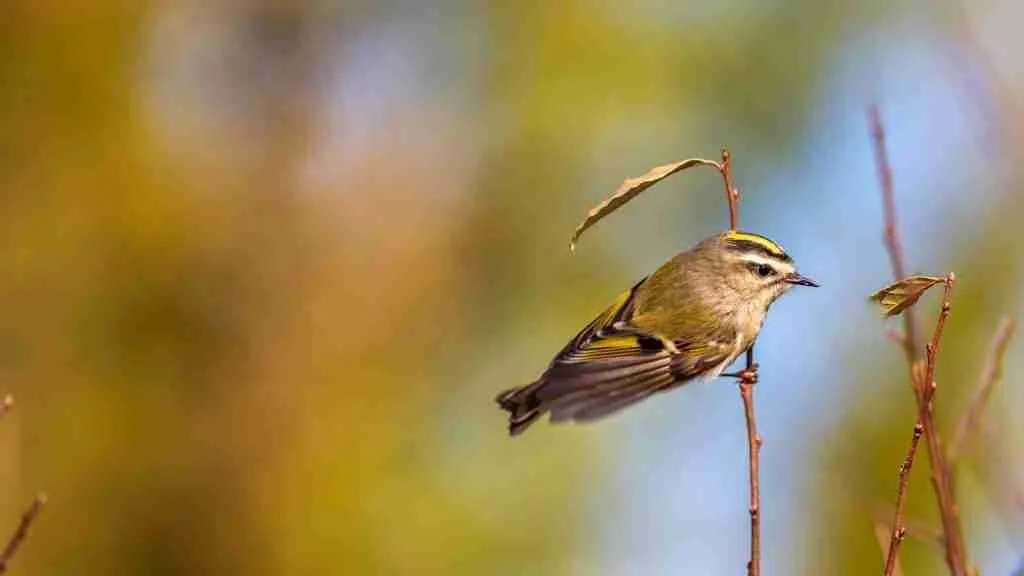
The Golden-crowned Kinglet is a small bird, measuring only 4 to 5 inches in length. It can be identified by its bright orange crown, streaked olive-green back, and white eye ring.
These birds have a diet primarily consisting of insects and spiders. They forage for food by actively searching through foliage and tree branches.
In New Mexico, the Golden-crowned Kinglet can be found in coniferous forests during the breeding season. During the winter, they may also be found in deciduous woodlands and suburban areas.
The Golden-crowned Kinglet is known for its energetic behavior. They constantly flit around, often hanging upside down to search for food. They also have a high-pitched call that is frequently heard in their habitat.

Bushtit
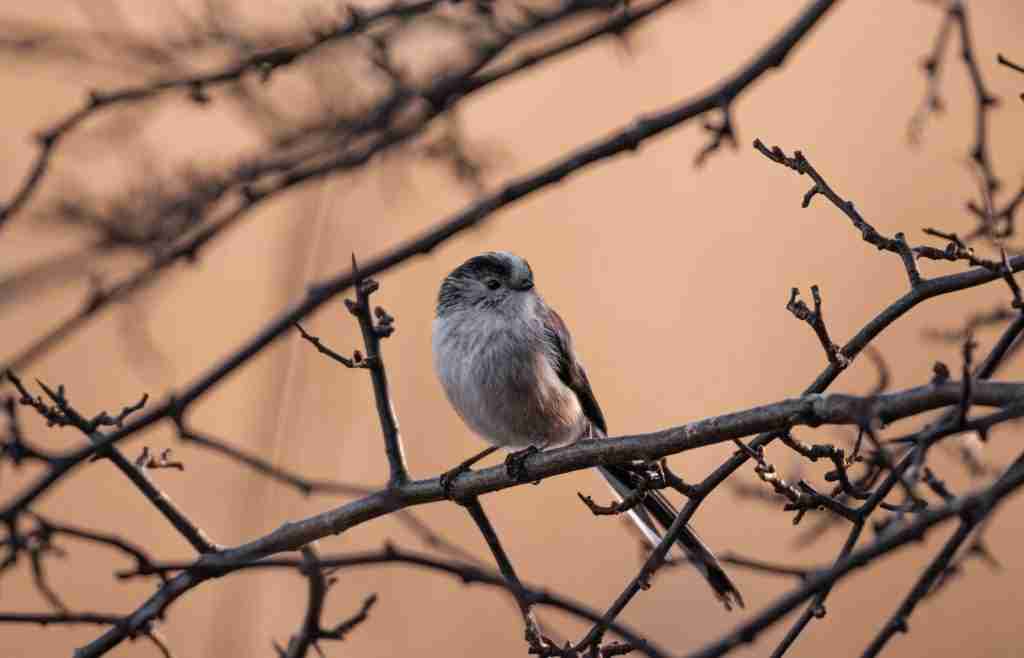
Bushtits, or Curve-billed Thrashers, are recognized by their long, curved bills and mottled brown feathers. They can also be identified by their loud, repetitive calls.
In New Mexico, these birds mainly feed on insects and fruits.
Bushtits typically grow to be about 10 inches in length and can be found in open habitats, such as deserts and grasslands.
These birds are known for their vigorous scratching behavior, often using their bills to dig through the ground in search of food. They also have a unique nesting habit, building domed nests with side entrances from sticks and other materials.
Bushtits are year-round residents in New Mexico and can often be seen perched on cactus or other tall plants.

European Starlings
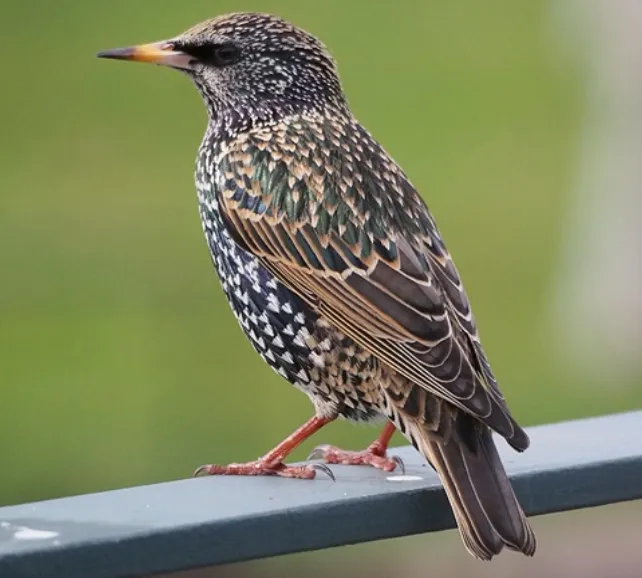
European Starlings, commonly found in New Mexico, have glossy black feathers with speckles of white. They have short triangular beaks suitable for eating insects, fruits, and grains.
These birds are about 8-10 inches in length with a wingspan of 12-15 inches.
They can often be found in open fields and parks, but also make their homes in urban areas such as buildings and trees.
European Starlings are known for their vocal ability and flocking behavior. They often gather in large numbers and put on spectacular aerial displays.
Additionally, they have been known to mimic the sounds of other birds and even household items.

Red-winged Blackbird
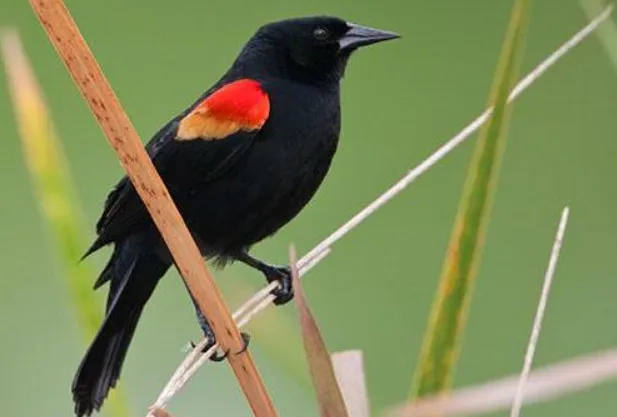
(Agelaius phoeniceus) can be identified by their black body with red and yellow shoulder patches. In New Mexico, they can often be found in marshes, fields, and wet meadows where they forage on insects and grains.
They typically range from 7-9 inches in length and are known for their loud, repetitive songs and territorial behavior. They form large flocks, called “musters,” during winter months before pairing off for the breeding season.
Their nests are built from grasses and are often found in cattails or tall bushes. These adaptable birds can be found throughout North America, making them one of the most abundant and widespread bird species in the continent.

Curve-billed Thrasher
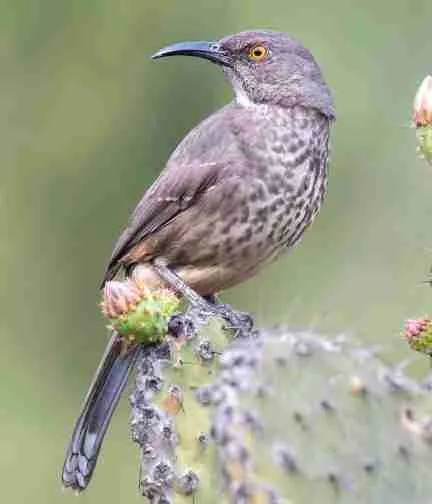
Curve-billed Thrasher is a medium-sized bird that can be identified by its curved bill, gray upperparts, and streaked brown underparts. Its diet consists mainly of insects and fruits.
In New Mexico, this species can be found in dry scrubland habitats such as deserts and chaparral. It is known for its behavior of scratching on the ground to find food, and also has a distinctive song made up of whistles and trills.

Yellow-rumped Warbler
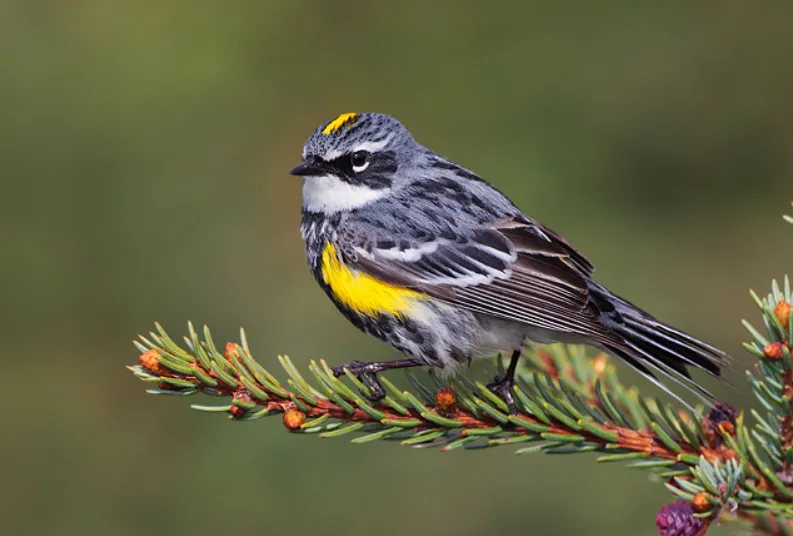
Yellow-rumped warbler is a small bird with a yellow patch on its rump and streaks on its breast. Its diet primarily consists of insects and berries. It can be found in coniferous forests, scrublands, and coastal habitats in New Mexico.
This warbler is known for its acrobatic behavior as it searches for food among the branches of trees. It also has a distinct, cheerful song that can often be heard during the breeding season.
This bird is commonly seen during migration as it travels to and from its wintering grounds in Mexico and Central America. However, some yellow-rumped warblers do stay in New Mexico year-round. These “Audubon’s” warblers have adapted to eating waxworms and suet, making them a frequent visitor at backyard bird feeders during the winter months.

Bewick’s Wren

Bewick’s Wrens, found in New Mexico, can be identified by their brown and white streaky markings, white eyebrow stripe, and long tail with white outer feathers. These birds mainly eat insects and other small invertebrates. They are smaller than a Robin, measuring about 4-5 inches in length.
Bewick’s Wrens tend to inhabit brushy areas and can be seen foraging on the ground or in low vegetation. They are known for their loud, high-pitched songs and aggressive behavior towards other birds.

Canyon Wren – Catherpes mexicanus

The Canyon Wren is a small bird, measuring up to 5.5 inches in length with a long, narrow tail and curved bill. Their plumage is brownish-gray on top and pale underneath, with white spotting on the wings and tail.
Their diet consists mainly of insects and spiders, which they glean from crevices in rocks or forage for on the ground.
Canyon Wrens can be found in rocky canyons and cliffs, as well as foothills and mesas, throughout New Mexico. They are typically seen singly or in pairs, but may gather in small flocks during winter months.
Their song is a loud, clear series of whistles, trills, and rattles that echo through their rocky habitats. They also use their bills to drum on canyon walls or other surfaces as part of their mating display.

Common Raven – Corvus corax

The Common Raven is a large, black bird with a thick bill and shaggy throat feathers. They can be identified by their deep, croaking calls and acrobatic flying abilities.
In New Mexico, the Common Raven can be found in a variety of habitats including forests, open fields, deserts, and mountains.
They are opportunistic eaters, feeding on insects, small animals, carrion, and human-provided food sources.
Common Ravens are highly social birds and can often be seen in pairs or large groups. They have been known to engage in playful behavior such as sliding down snow banks and dropping objects to watch them fall. They are also known for their intelligence and problem-solving abilities.
On average, Common Ravens measure about 24 inches in length with a wingspan of approximately 4 feet. However, they have been known to reach lengths of 27 inches and wing spans of over 5 feet.

Barn Swallow – Hirundo rustica
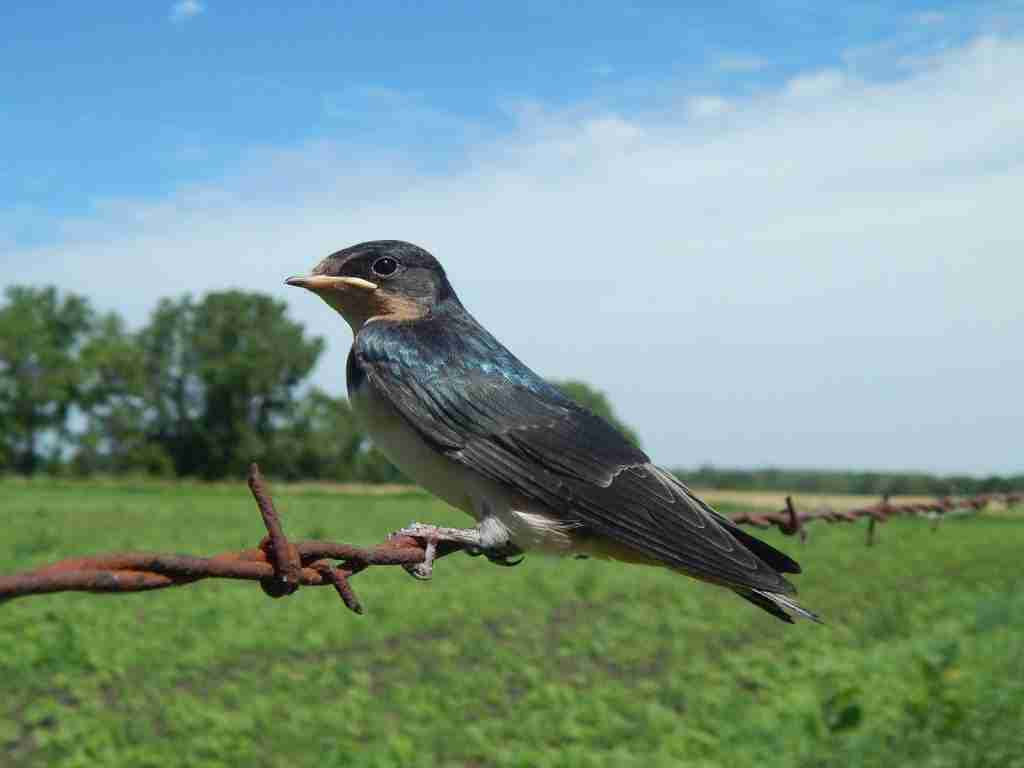
The Barn Swallow can be identified by its slender body, forked tail, and blue upperparts with a rusty-brown throat and forehead. They primarily feed on flying insects caught in mid-air, but will also eat berries and bread crumbs from human sources.
In New Mexico, these birds can be found nesting on buildings, bridges, and other human-made structures. They are also often seen flying gracefully over open fields and meadows.
During breeding season, Barn Swallows form large colonies and display cooperative behaviors such as sharing food or building nests together. Outside of this period, they tend to be more solitary or will gather in small flocks. These birds also have a spectacular courtship display, diving and swooping through the air in synchronized movements.
The average length of a Barn Swallow is 5-6 inches and they have a wingspan of around 11 inches. They are migratory, spending winters in Central and South America and returning to breed in North America during the spring and summer.

Lark Bunting – Calamospiza melanocorys

Lark Bunting – is a small songbird found in open grasslands and agricultural fields throughout New Mexico. They have a distinct black-and-white striped head, chestnut back and wings, and white belly. Their diet consists mostly of seeds and insects.
Lark Buntings are known for their large flocks during migration and winter periods, but during breeding season they can be found in pairs or small family groups. Their song is a high-pitched and whistled tune.
These birds build cup-shaped nests on the ground, where the female will lay 2 to 4 eggs. Both parents participate in incubating and feeding their young.
Threats to Lark Buntings include loss of habitat due to agricultural development and pesticide use. However, their populations are currently stable.
Lark Buntings can be easily spotted during the spring and summer months in New Mexico, singing their unique songs from perches on fence posts or utility lines. Keep an eye out for these charming little birds on your next outing in the grasslands of New Mexico.

Western Kingbird – Tyrannus verticalis
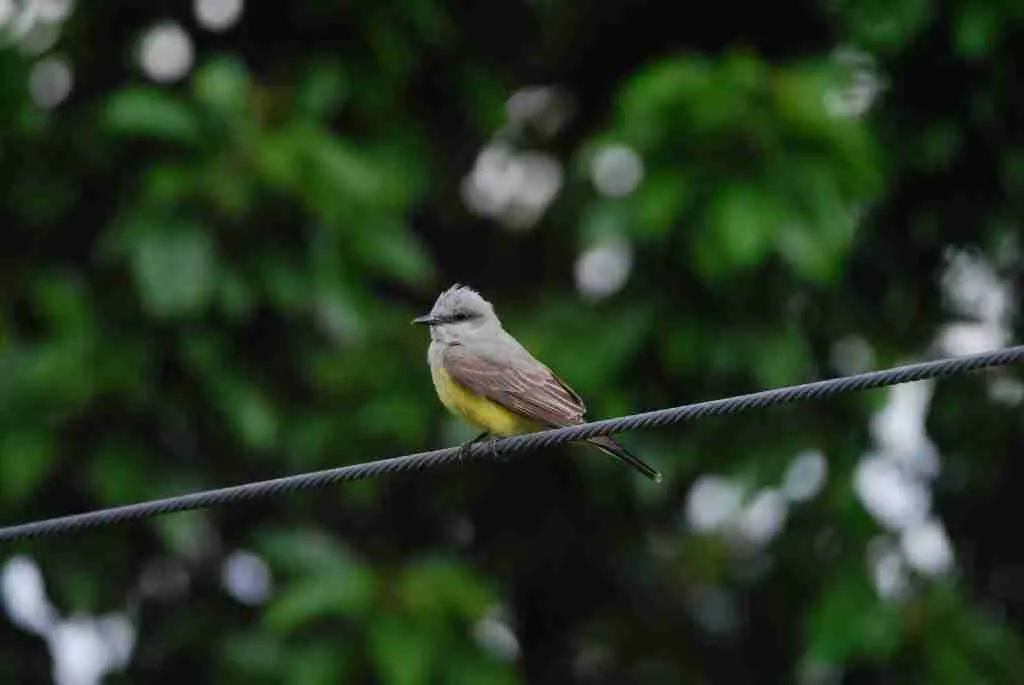
The Western Kingbird can be identified by its gray head, dark back, white underbelly, and bright yellow throat and breast. It typically feeds on insects, berries, and fruits.
This bird ranges in size from 7 to 8 inches in length with a wingspan of 13 to 17 inches.
It can be found in open areas with trees or shrubs, such as fields, pastures, and parks.
In terms of behavior, the Western Kingbird is known for its aggressive territoriality and will often chase away larger birds from its territory. It also performs impressive acrobatic feats while catching insects in mid-air.
During breeding season, the male will construct a cup-shaped nest for the female to lay her eggs in, and both parents will take part in incubating and feeding the young.
In New Mexico, the Western Kingbird can be found year-round in the southern and western parts of the state. It may also migrate through northern and eastern areas during spring and fall.

Song Sparrow
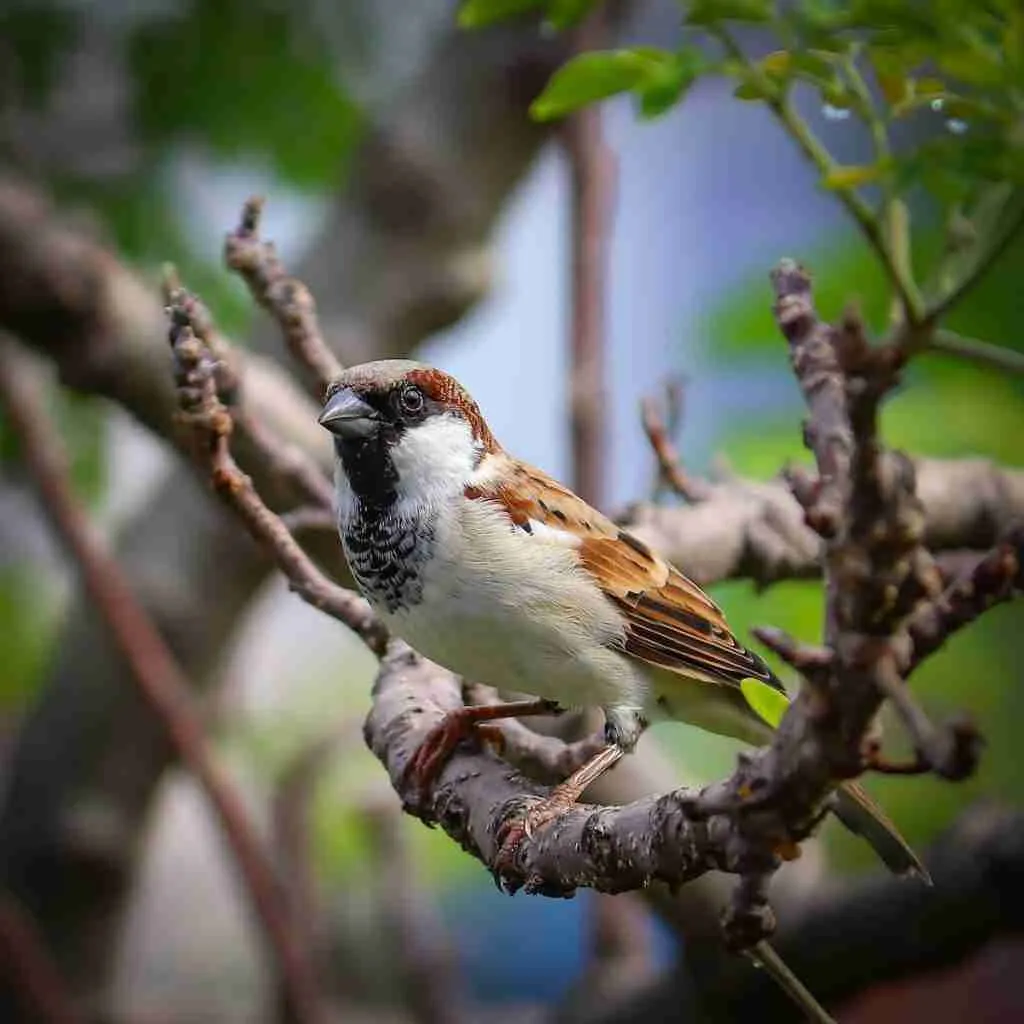
Song Sparrows in New Mexico can be identified by their streaky brown plumage, grayish crown, and distinctive dark spot in the middle of their chest. They primarily eat seeds and insects.
These birds range in size from 5 to 6 inches in length. They can be found in a variety of habitats including wetlands, grasslands, forests, and urban areas.
Song Sparrows are territorial and will fiercely defend their territory, often singing loudly to advertise their presence. They build cup-shaped nests and may have multiple broods in a single breeding season.

House Finch
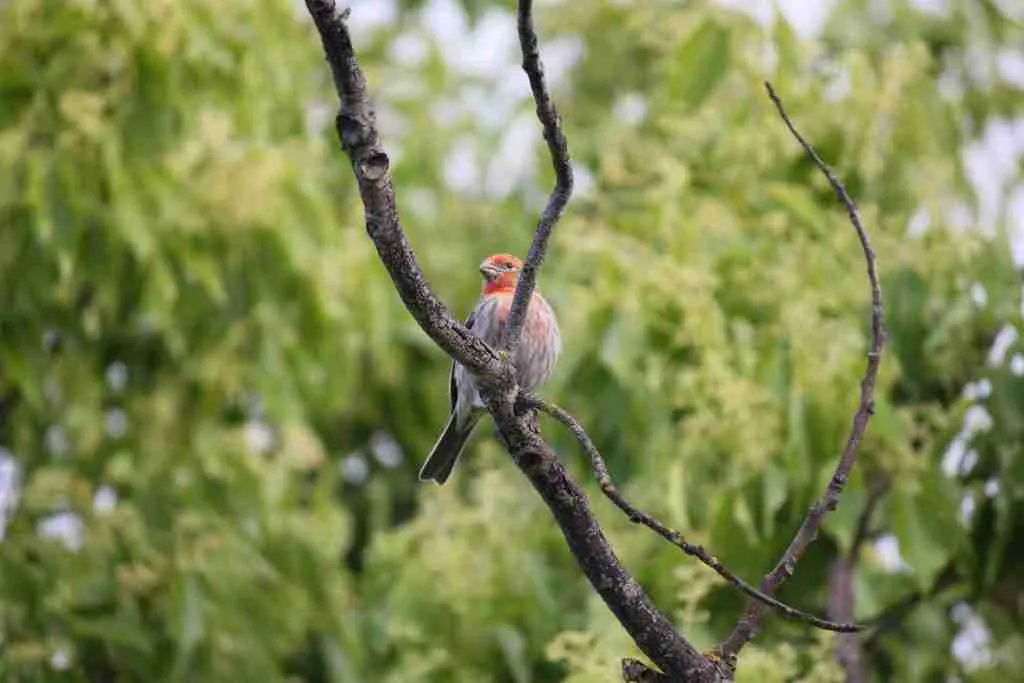
House Finch is a common bird found in New Mexico. The male has a red head and breasts, while the female is brown with streaks on her chest. They mainly eat seeds and fruit, but will also consume insects for protein.
They are small birds, measuring around 5-6 inches in length. Their preferred habitat includes open woodlands, farmlands, and suburban areas with bird feeders. They are social birds, often seen in flocks outside of breeding season. During the breeding season, they build cup-shaped nests in trees or shrubs and lay 3-5 eggs per clutch.
Both male and female participate in incubating the eggs and feeding the young hatchlings. House Finches also have a recognizable song, consisting of several high-pitched notes followed by a trill.

House Sparrow
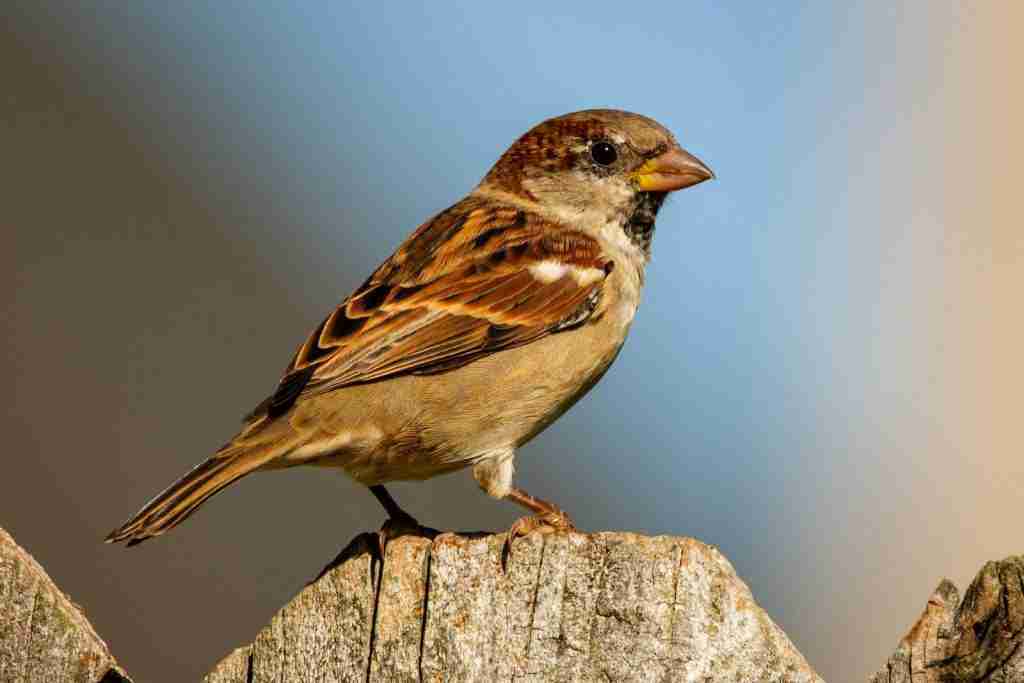
House Sparrows, also known as English Sparrows, can be identified by their small, stout bodies with brown and black speckled feathers. They have a distinct white cheek stripe and gray crown on their heads.
In terms of diet, these birds primarily feed on grains and seeds but will also eat insects and sometimes even small fruits.
On average, House Sparrows measure around 16-18 cm in length and have a wingspan of 23-25 cm.
These birds can be found in a variety of habitats including urban areas, agricultural fields, and grasslands.
In terms of behavior, House Sparrows are social birds that form large flocks and can often be seen gathering at bird feeders. They are also known to be aggressive towards other bird species, especially when competing for food or nesting sites.

American Goldfinch
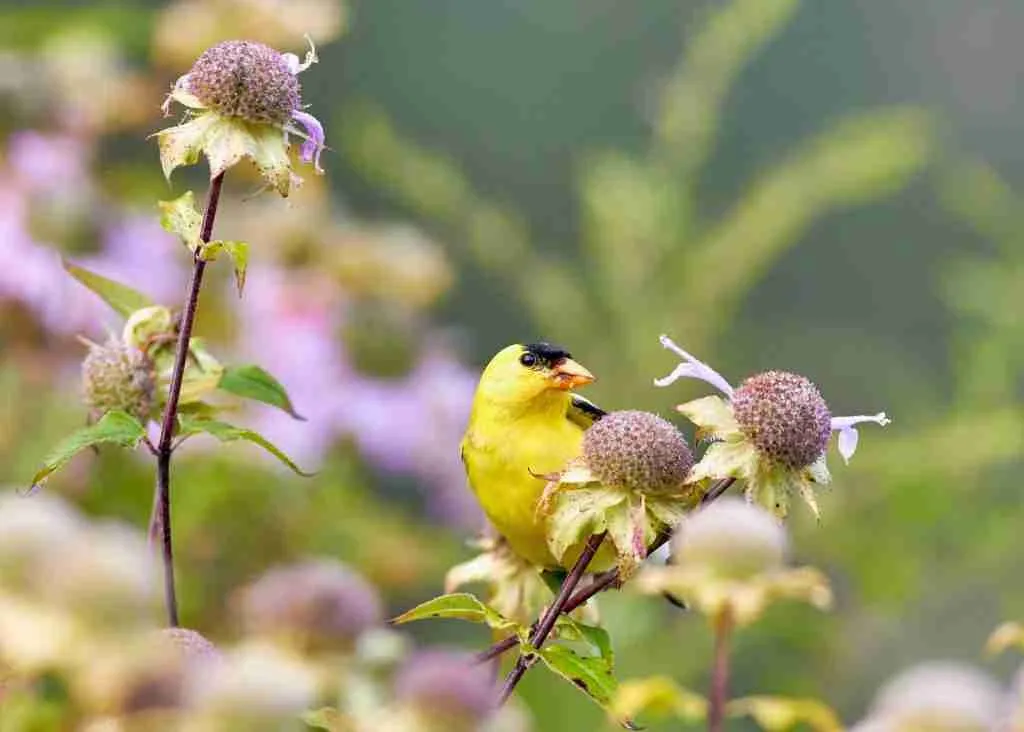
(Spinus tristis) can be identified by their bright yellow feathers and black wings with white patches. They mainly feed on seeds and insects. Their size ranges from 4.3-5.1 inches in length with a wingspan of 7.5-9.1 inches.
These birds can typically be found in open areas with shrubs or trees, such as gardens, parks, and farms. In terms of behavior, American Goldfinches are often seen traveling in small flocks and have a high-pitched call. They also typically breed during the summer months.
In New Mexico, American Goldfinches can be found in various habitats, including woodlands, grasslands, and open areas with shrubs or trees. They can also be spotted during the winter months in backyard bird feeders.

American Crow

American Crows, also known as American Crows, can be identified by their all black feathers, pointed bills, and loud cawing calls. These birds are omnivorous and will eat a variety of foods including insects, grains, fruits, and small animals. They have been known to adapt well to human environments, often being found in urban areas.
In terms of size, American Crows can range from 17 to 21 inches in length with a wingspan of up to three feet.
They can be found in a variety of habitats including forests, fields, and wetlands.
In terms of behavior, American Crows are highly social birds often seen in large groups or “murders.” They have also been known to use tools, and have a complex communication system. Additionally, they are known for their strong family bonds and mate for life.

Downy Woodpecker
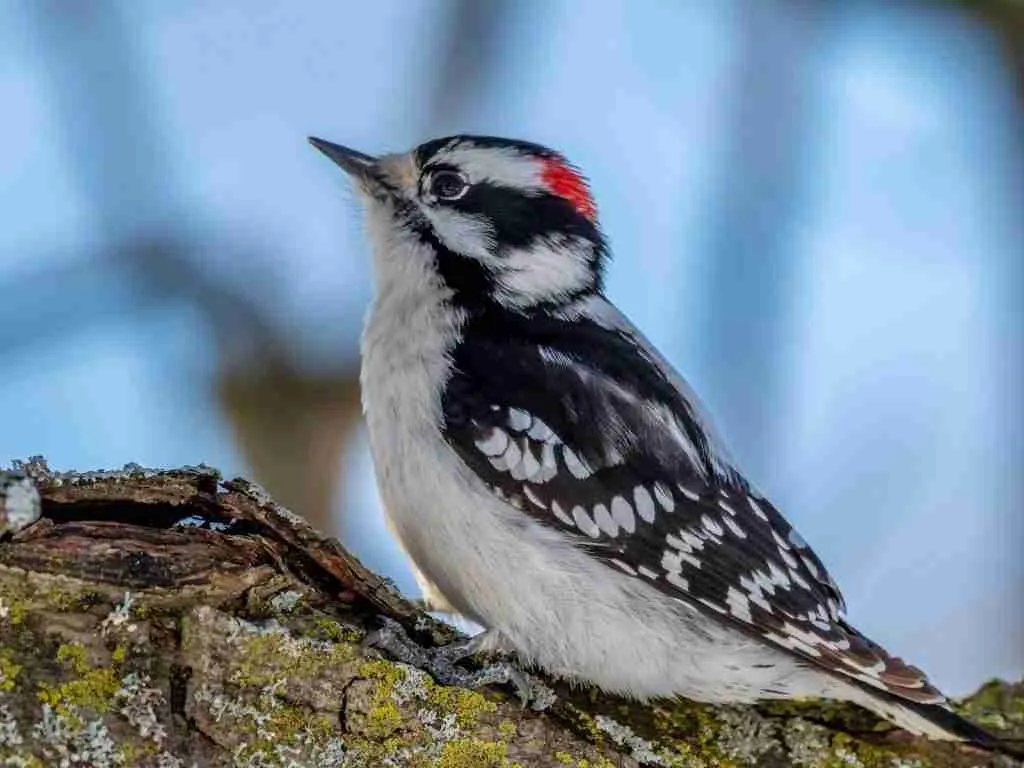
Downy Woodpecker, the smallest woodpecker found in New Mexico, can be identified by its black and white striped back and wings, white underside with black spots, and red patch on the back of its head. Its diet consists mainly of insects and their larvae, which it obtains by pecking into tree bark. It can also eat seeds and berries.
The Downy Woodpecker is about 6-7 inches in length and can be found in a variety of habitats including forests, parks, and residential areas with trees. It exhibits territorial behavior, defending its territory from other woodpeckers and potential predators.
The male and female pair up during breeding season to build their nest in a cavity in a tree, where they will lay and incubate their eggs. The male and female also work together to feed and care for their young. Outside of breeding season, the Downy Woodpecker can often be seen alone or in small flocks.

Townsend’s Solitaire – Myadestes townsendi

Townsend’s Solitaire – is a medium-sized bird, with grey upperparts and white underparts. They have a distinct black eye mask and a long, slightly curved bill. Their diet primarily consists of insects and berries.
In New Mexico, Townsend’s Solitaires can be found in scrublands, coniferous forests, and high elevation rocky slopes. They are known for their solitary nature and their unique singing ability, often mimicking the songs of other bird species.
They also have a unique courtship display, where the male flies high into the air before diving back towards the ground, producing a loud whistling sound.

Black-chinned Hummingbird – Archilochus alexandri
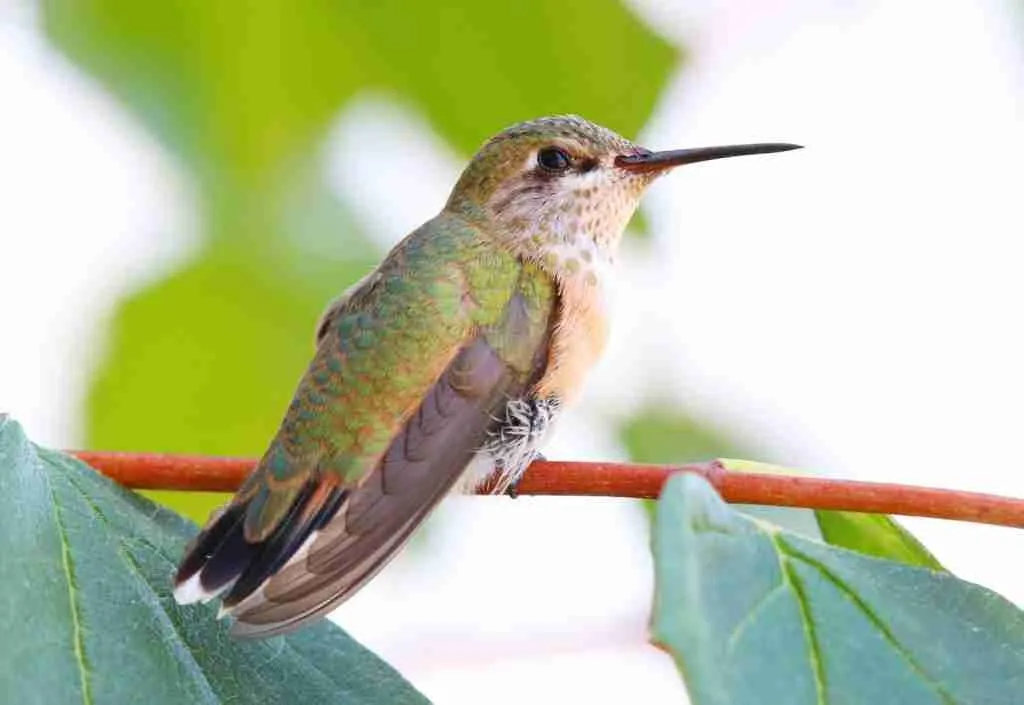
The Black-chinned Hummingbird is small, measuring only about 3.5 inches in length with a wingspan of 4.3 inches. It has dark green upperparts and a purple-black throat (or “gorget”) with a white breast and belly. Males also have a bronzy green back and tail.
This bird primarily feeds on nectar from flowers and small insects. In New Mexico, it can be found in open woodlands, desert scrub, and urban areas with flowering vegetation.
During the breeding season, male Black-chinned Hummingbirds perform elaborate aerial displays to attract a mate. They also defend their territory by diving and chattering at other hummingbirds that enter their space. Outside of the breeding season, they may gather in small flocks.
In New Mexico, the Black-chinned Hummingbird is a year-round resident and can also be found migrating through the state during spring and fall. It nests on branches or bushes near sources of nectar and builds a cup-shaped nest made of plant fibers, covered with lichens.
Female Black-chinned Hummingbirds lay 2-3 white eggs, which hatch in about two weeks. Both parents will feed the young until they are ready to leave the nest at about 20 days old.

What are the most common birds in New Mexico?
Some of the most commonly seen birds in New Mexico include American Robins, Pinyon Jays, House Finches, Mourning Doves, and Northern Flickers. Other common species include Red-tailed Hawks, Cassin’s Kingbirds, Western Scrub-Jays, and Black-billed Magpies.
New Mexico is also home to a variety of raptors, including Cooper’s Hawks, Red-tailed Hawks, and Golden Eagles. The state is also known for its abundance of hummingbirds, with species such as Broad-tailed Hummingbirds and Black-chinned Hummingbirds commonly seen in the summer months.
What birds are in Albuquerque New Mexico?
Some common bird species in Albuquerque include American Robins, Northern Cardinals, Mourning Doves, Eurasian Collared-Doves, White-winged doves, and House Sparrows. Other birds such as Red-tailed Hawks and Great Horned Owls can also be found in the area.
Birdwatching is a popular activity in Albuquerque, with the Bosque del Apache National Wildlife Refuge and the Rio Grande Nature Center State Park being popular spots for birders. The annual Albuquerque Bird Festival also draws in many bird enthusiasts from across the country.
What birds are in Santa Fe NM?
Some of the common bird species found in Santa Fe, NM include American robins, northern cardinals, mourning doves, house finches, black-capped chickadees, and American goldfinches. Other less commonly seen birds in the area include Western scrub-jays, wild turkeys, great horned owls, and various species of hawks and woodpeckers.
The nearby Santa Fe National Forest also offers opportunities to spot a variety of migratory bird species during certain times of the year. Birding enthusiasts may also want to visit nearby Bandelier National Monument, which is known for its diverse bird population.
What kind of sparrows are in New Mexico?
According to a study done by the New Mexico Department of Game and Fish, the most commonly found sparrow species in New Mexico are Chipping Sparrows, Brewer’s Sparrows, House Sparrows, and Vesper Sparrows.
However, there have also been sightings of rarer species such as Grasshopper Sparrows and Lark Sparrows. The best time to spot these sparrows is during the spring and fall migration periods.
Winter birds of New Mexico:
Some common winter birds in New Mexico include the dark-eyed junco, American goldfinch, pine siskin, and red-breasted nuthatch. These hardy birds can often be seen foraging in snowy open areas or flitting among coniferous trees. Other winter birds in our state include mountain chickadees, bushtits, and pine grosbeaks.

An avid ornithologist, zoologist and biologist with an unwavering passion for birds and wild animals.
Dr. Wilson’s journey in ornithology began in childhood and led him to obtain a Ph.D. in Ornithology from the prestigious Avian Research Institute. He has worked closely with renowned experts in the field and conducted extensive research and field studies globally.

